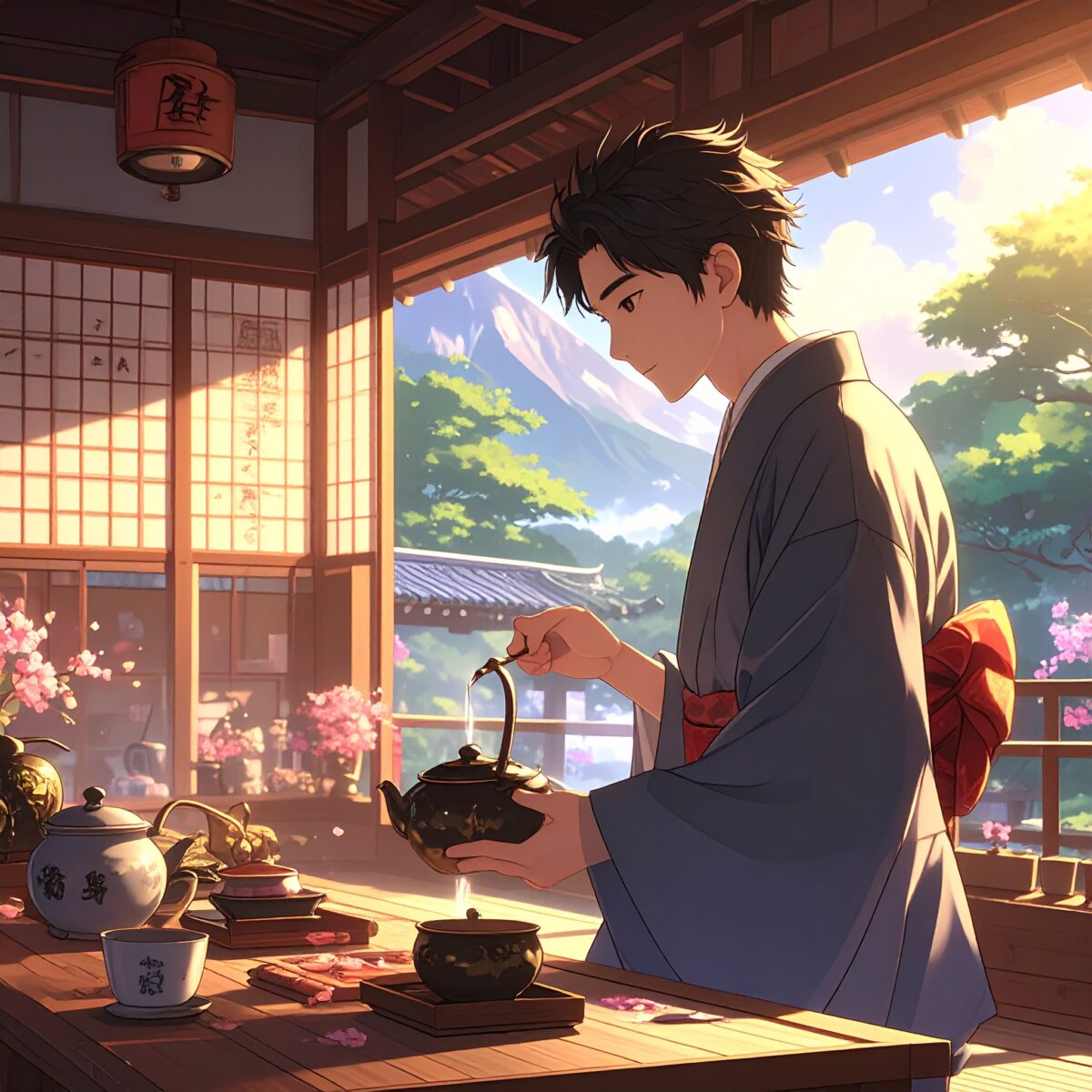Among all the experiences I had in Japan, the tea ceremony stands out as one of the most memorable. I had imagined it as a formal ritual centered around drinking matcha, but what I encountered was something far deeper—an immersion into the very essence of stillness. From the silent steps and purposeful movements to the sound of hot water being poured, everything unfolded slowly, with quiet intention. Time itself seemed to take on a different rhythm.
The experience took place in a traditional tea room nestled within a machiya townhouse in Kyoto. As I stepped onto the tatami mats, surrounded by soft light filtering through shoji screens, a hanging scroll, and seasonal flowers, I immediately sensed the shift in atmosphere. I quietly sat as the host began the ceremony, every gesture deliberate—placing the ladle, whisking the matcha, rotating the tea bowl. Each movement held meaning, and the grace of it all was mesmerizing.
The tea ceremony is often described as “hospitality through a single bowl of tea.” But that hospitality is woven with layers of seasonal awareness, spatial harmony, refined tools, mental preparation, and mutual respect. Words are few, but the experience speaks volumes—the vivid green of the matcha, the earthy aroma, the texture of the tea bowl, the gentle bitterness, the warmth against your hands. Every detail tells its own story.
What struck me most was the role of sound. In the quiet of the room, the faint bubbling of the kettle, the trickle of water, the rhythmic whisking of tea—all formed a subtle, soothing symphony. Even the soft clink of placing a tea bowl echoed like a note in a meditative melody. Surrounded by this delicate soundscape, I realized just how noisy everyday life usually is. In this silence, my mind settled, my breath deepened.

Even the act of drinking the tea follows a gentle ritual. You lightly turn the tea bowl, quietly take the first sip, and let the flavors unfold—bitterness layered with umami and a subtle aroma, leaving behind a calm, lingering aftertaste. You pause to appreciate the design of the bowl, feel its texture in your hands, and finally offer a bow with the words, “Kekkou na otemae deshita”, meaning “Thank you for the exquisite preparation.” Each small action, once ordinary, began to feel like a moment of self-respect and quiet care.
What struck me most was the absence of right answers or competition. The tea ceremony holds a philosophy of cherishing the present moment. It stands in quiet defiance of speed and efficiency—not because nothing is wasted, but because everything is meaningful. Simply being in that space brought awareness to my breath, my posture, my state of mind—naturally and without effort.
Through this experience, I also encountered the essence of Japanese hospitality. Not loud or showy, but quietly attentive. The seasonal sweets, the calligraphy scroll, a single flower blooming in the garden—all elements gently welcomed the guest, wrapping them in a silent embrace.
What stayed with me afterward wasn’t just the memory of drinking tea—but the stillness it left inside me. It’s hard to describe, but there was a quiet order within my heart. I never expected to find such peace in the middle of a busy trip.
When I return to Japan, I know I’ll seek out another tea ceremony. A different season, a different bowl, a different room—each with its own expression of quiet. The tea ceremony reminded me what it means to truly be in the moment. Perhaps this is what people mean when they say silence can be beautiful.




